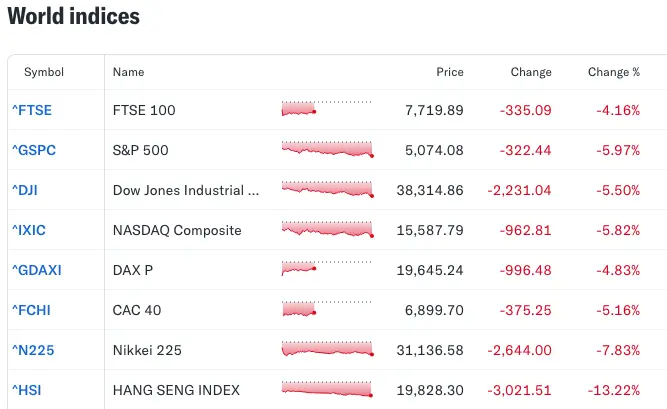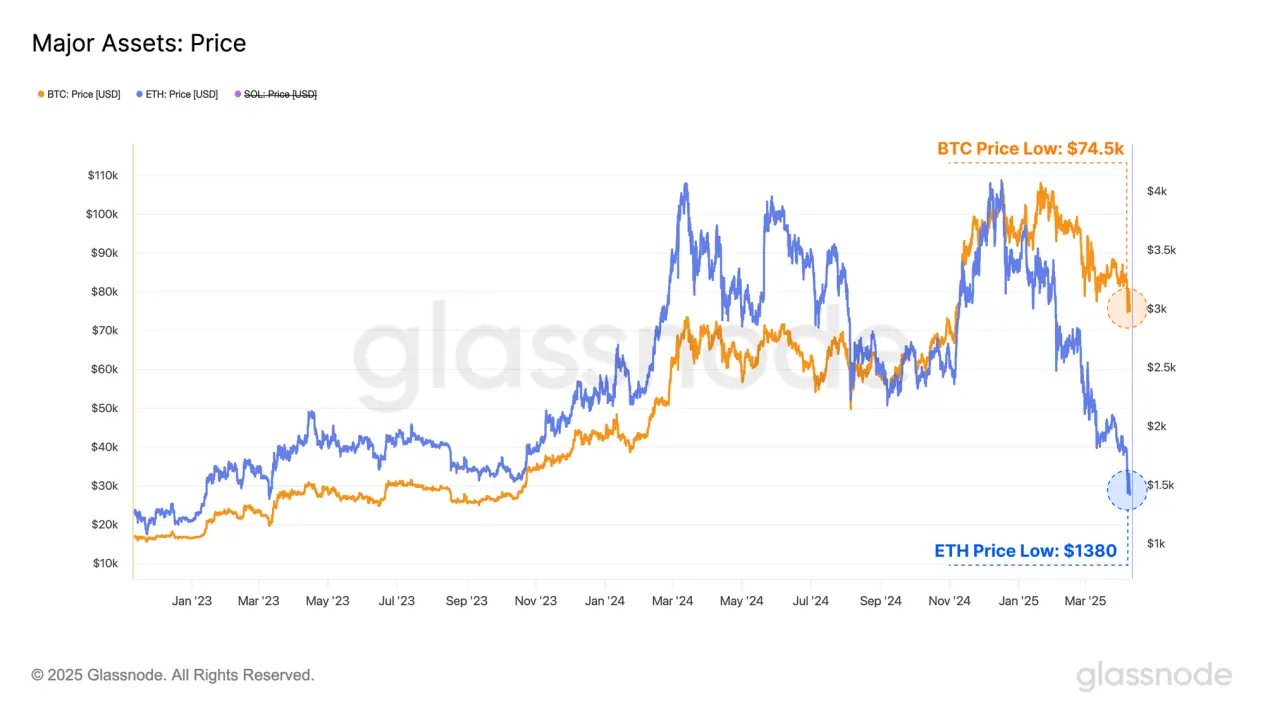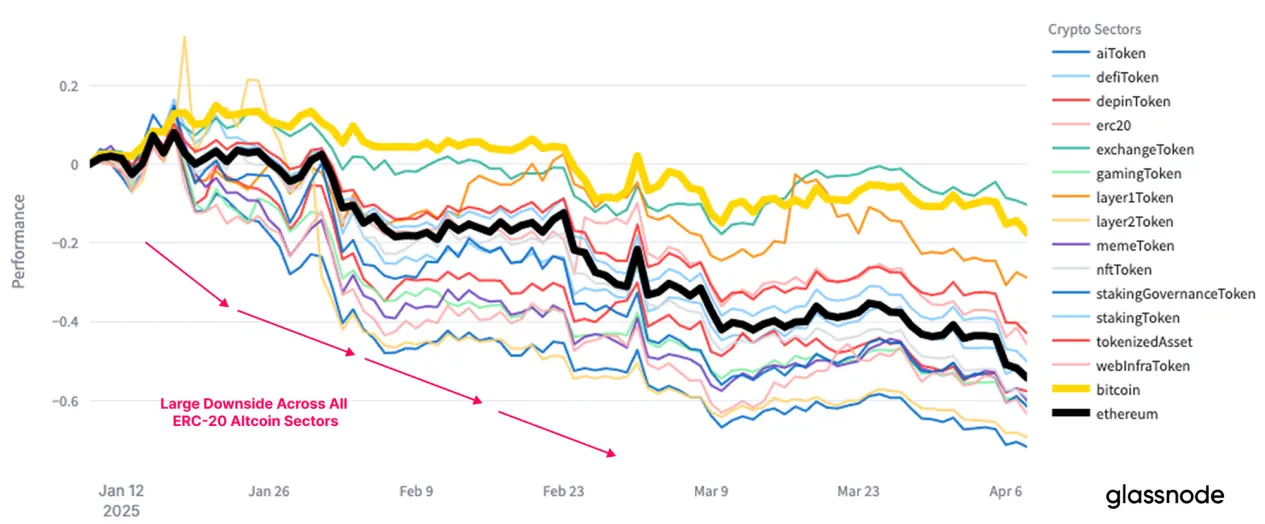The Trump administration announced the "Liberation Day" tariff policy, causing severe fluctuations in financial markets, with major macro indices generally declining, and the digital asset market was not spared, experiencing a comprehensive downturn.
Summary
- The news of U.S. tariff increases severely disrupted global major financial markets, with many markets experiencing one of their worst trading days since March 2020.
- Capital inflows into digital assets have almost stagnated, with liquidity significantly contracting and bringing strong downward pressure.
- However, from the price trends of BTC and ETH, as prices explore lower levels, the scale of loss-taking gradually reduces, which may indicate that selling pressure in the market is being exhausted in the short term.
- The decline across the digital asset market is widespread. The Altcoin market capitalization has dropped from $1 trillion in December 2024 to $583 billion currently.
- Comprehensive on-chain and technical model analysis shows that to regain upward momentum, BTC must reclaim the $93,000 level. The critical support zone between $65,000 and $71,000 is what the bulls must defend.
Comprehensive Market Decline
The Trump administration's announcement of the "Liberation Day" tariff policy triggered severe financial market volatility, with major stock indices generally declining. The U.S. policy stance has shifted towards promoting a weaker dollar, interest rate cuts, oil price decline, and fiscal expenditure contraction. These factors combined may lead to a significant economic slowdown in the United States and trigger a substantial liquidity contraction.
The uncertainty brought by tariffs became the trigger for increased "risk-averse" sentiment, sparking massive sell-offs, with multiple major financial indices recording their worst performance since March 2020.

Source: Yahoo Finance
The digital asset market is particularly sensitive to global liquidity changes and was not spared in this downturn, with many crypto assets experiencing double-digit percentage declines.
As the dominant asset, BTC's price dropped from $83,500 to $74,500, with a market value evaporation of approximately $150 billion.
ETH, as the second-largest crypto asset, experienced an even more severe decline, with its price falling from $1,800 to $1,380, reducing its market value by about $40 billion.

Market-wide Contraction
The ongoing tightening of current market liquidity has triggered a significant devaluation across the entire Altcoin sector. Assets at the far end of the risk curve are particularly sensitive to liquidity shocks, typically accompanied by more severe price retracements.
As of December 2024, the overall market capitalization of Altcoins (excluding Bitcoin, Ethereum, and stablecoins) reached a peak of $1 trillion in this cycle. Since then, market cap has significantly pulled back, currently dropping to $583 billion, a decline of over 40% in just a few months.

Notably, in this current correction, Altcoin subsectors have not demonstrated notably differentiated trends. The overall decline is widespread, with all subsectors experiencing significant devaluation, and Bitcoin has even recorded negative returns over the past three months.







